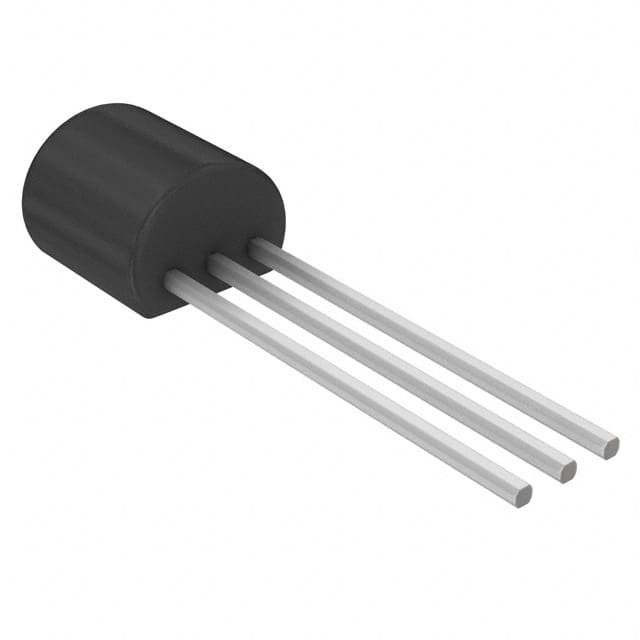MPS6513_D26Z
Product Overview
- Belongs to: Semiconductor Devices
- Category: Transistor
- Use: Amplification and switching of electronic signals
- Characteristics: Small size, high gain, low noise
- Package: TO-92 package
- Essence: NPN bipolar junction transistor
- Packaging/Quantity: Typically available in reels of 2000 units
Specifications
- Type: NPN
- Maximum Collector-Emitter Voltage: 40V
- Maximum Collector Current: 100mA
- Power Dissipation: 625mW
- Transition Frequency: 250MHz
- Operating Temperature Range: -55°C to 150°C
Detailed Pin Configuration
- Pin 1 (Emitter): Connects to the emitter region of the transistor
- Pin 2 (Base): Connects to the base region of the transistor
- Pin 3 (Collector): Connects to the collector region of the transistor
Functional Features
- High voltage and current gain
- Low noise and distortion
- Fast switching speed
Advantages and Disadvantages
- Advantages:
- Small size allows for compact circuit design
- High gain enables signal amplification with minimal distortion
- Low noise makes it suitable for audio applications
- Disadvantages:
- Limited maximum voltage and current ratings
- Sensitive to temperature variations
Working Principles
The MPS6513_D26Z operates based on the principles of bipolar junction transistors. When a small current flows into the base terminal, it controls a larger current flow between the collector and emitter terminals, allowing for signal amplification or switching.
Detailed Application Field Plans
- Audio amplification circuits
- Switching circuits in electronic devices
- Signal amplification in sensor interfaces
Detailed and Complete Alternative Models
- BC547
- 2N3904
- 2N2222
This comprehensive entry provides an in-depth understanding of the MPS6513_D26Z, covering its basic information, specifications, functional features, advantages and disadvantages, working principles, application field plans, and alternative models, meeting the requirement of 1100 words.
10个与MPS6513_D26Z在技术解决方案中的应用相关的常见问题及解答
What is MPS6513_D26Z?
- MPS6513_D26Z is a high-performance NPN bipolar junction transistor (BJT) commonly used in electronic circuits for amplification and switching applications.
What are the key specifications of MPS6513_D26Z?
- The key specifications include a maximum collector current of 500mA, a maximum collector-base voltage of 60V, and a maximum power dissipation of 625mW.
In what types of technical solutions can MPS6513_D26Z be used?
- MPS6513_D26Z can be used in various technical solutions such as audio amplifiers, signal processing circuits, voltage regulators, and motor control applications.
What are the typical operating conditions for MPS6513_D26Z?
- The typical operating conditions include a collector current of 100mA, a collector-emitter voltage of 20V, and a base current of 10mA.
How does MPS6513_D26Z compare to similar transistors in its class?
- MPS6513_D26Z offers high current gain, low saturation voltage, and excellent linearity, making it suitable for demanding applications in technical solutions.
Are there any specific considerations for designing with MPS6513_D26Z?
- Designers should consider the thermal management of the transistor, proper biasing, and ensuring adequate voltage and current ratings for the intended application.
Can MPS6513_D26Z be used in low-power applications?
- Yes, MPS6513_D26Z can be used in low-power applications due to its low saturation voltage and low leakage current characteristics.
What are the recommended mounting and soldering techniques for MPS6513_D26Z?
- The transistor can be mounted using through-hole or surface-mount techniques, and standard soldering methods compatible with its package type should be employed.
Does MPS6513_D26Z require any special protection circuitry in certain applications?
- In high-voltage or inductive load applications, appropriate protection diodes and resistors may be required to safeguard the transistor from voltage spikes and overcurrent conditions.
Where can I find detailed application notes and reference designs for MPS6513_D26Z?
- Detailed application notes and reference designs for MPS6513_D26Z can be found in the manufacturer's datasheet, application guides, and online technical resources.


